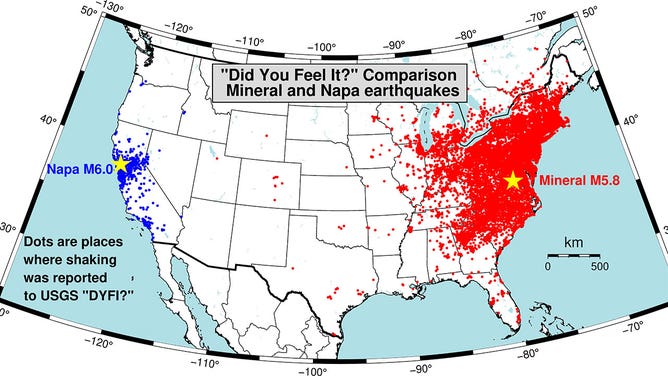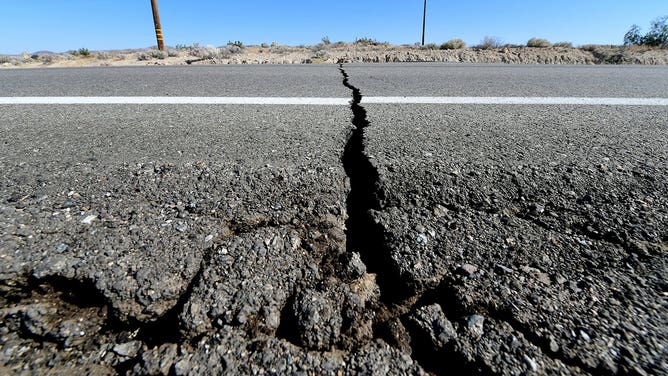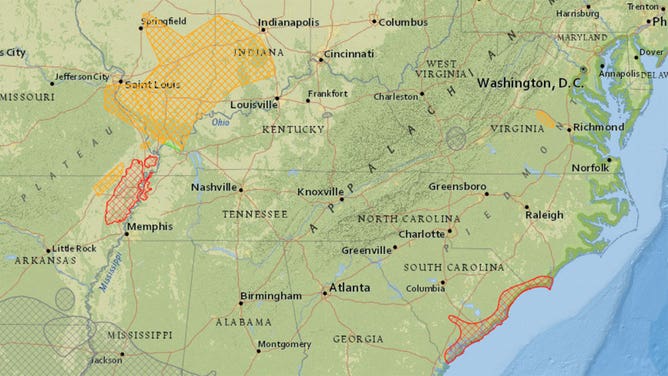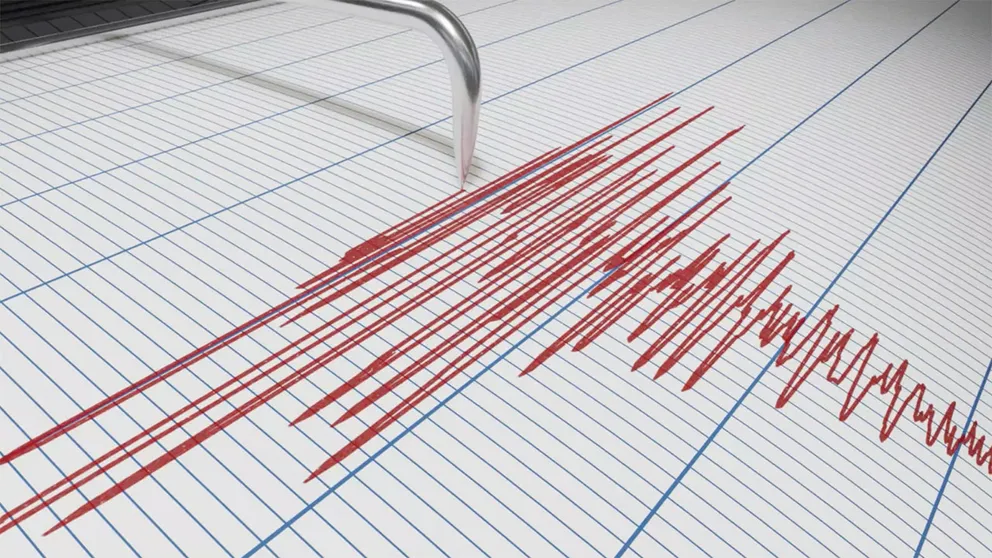East vs. West: Why earthquakes are felt differently on either side of the US
While you may think quakes are a western US problem, some of the largest temblors in US history have happened in the East
Why earthquakes are felt differently in the US
While you may think quakes are a western US problem, some of the largest temblors in US history have happened in the East.
According to the U.S. Geological Survey, there are about 20,000 earthquakes each year around the world.
In the U.S., a majority of the shaking happens in the western regions of the country. However, a look at history shows there has been plenty of shaking in the East, as well.
According to Thomas Pratt, Central and Eastern region coordinator at the USGS Geologic Hazards Science Center, four of the 10 largest earthquakes recorded in the Lower 48 happened in the East.
"There were three large earthquakes in the New Madrid seismic zone in the Mississippi Valley in 1811-1812, and there was a magnitude 7 in Charleston, South Carolina, in 1886 that caused extensive damage," Pratt said. "So, we do get some large ones in the East."
When those quakes happen in the East, they can be felt hundreds of miles away from the center of the shaking. Whereas in the West, the tremors are usually felt much more closely to the epicenter.
The map below shows two quakes of similar magnitudes and where the shaking was felt, based on a USGS metric called "Did you feel it?" It shows the differences in how far earthquakes are felt from the center in the East versus the West.

How far earthquakes are felt from their epicenters varies greatly between the eastern and western U.S.
(USGS)
Pratt said those differences come from the types of rocks that make up the ground on either side of the country.
"Earthquakes are felt a lot more widely in the eastern U.S. because the rocks are much older, they're much harder, and they transmit energy much more efficiently than they do in the western U.S." Pratt said.
He said you can think of the ground in the East as a granite countertop in a kitchen, while the ground in the West is more akin to a sponge.
"Think of the western U.S. more as a stiff soil where you can still pick at it with a shovel and things like that," Pratt said. "It just doesn't transmit the energy, and so, when you get the same sized earthquake in both places, you feel it far, far more widely."

Cracks are seen on the road along Hwy 178 north of Rodgecrest, California, some 16 miles south of Trona, California, on July 4, 2019.
(FREDERIC J. BROWN/AFP via Getty Images)
Pratt said that wider area of shaking can, in principle, equate to more damage caused by an eastern U.S. earthquake. However, the differences in soil alone doesn’t mean more damage.
"A lot of buildings in eastern U.S. are not built to withstand earthquakes, whereas almost everything built in the western U.S., now, is built with pretty strict earthquake standards," Pratt said. "There's a lot of older buildings in the eastern U.S. that do not have any kind of seismic strengthening at all, and so, one of the concerns we have is a large earthquake underneath something like New York or Boston or Charleston, South Carolina, would cause far more damage than something underneath Los Angeles."
Eastern earthquakes are still a mystery
Another difference in quakes on either side of the U.S. is that scientists are not quite sure why they happen in the East at all.
"The most active ones tend to be at the plate boundary, specifically California, Washington, Oregon, Alaska, where you've got the Pacific plate rubbing against the North American plate," Pratt said. "In the eastern U.S. it's more of a mystery, and we really don't know why there's earthquakes in the U.S., because that should be a stable continental plate without a lot of motion across the fault."
Some of the most seismically active places in eastern U.S. are Charleston, South Carolina, Central Virginia, parts of New England and the New Madrid region along the Mississippi River. A map of the zones can be found here.

This image taken from a USGS hazards map shows the most active seismic zones in the Eastern U.S.
(USGS)
Pratt said there has also been an increase in manmade seismicity in the past couple of decades in Kansas, Oklahoma and Texas, which is caused by the harvest of oil and natural gas.
"What happens is that the rocks are very close to failure, and in just a small perturbation from fluid injection is enough to trigger an instance," Pratt said.
Preparing for shaking
Pratt said preparing for an earthquake is similar to preparing for other natural disasters with which people in the East are much more familiar.
"If there is a large earthquake, it may be a day or two before rescue operations can get to you, so make sure you've got a couple of days’ worth of food and water, and that's true for any natural hazards like hurricanes, tornadoes, etc." Pratt said.
Pratt said people should also ensure furniture like bookshelves are bolted to the wall and that large objects aren’t placed high up on shelves. He said people should also make sure their homes are bolted to their foundations.
